I’ve always loved how horror films can create a tense atmosphere just by the way a scene is paced or the way it is lit. When watching something like “The Conjuring” or “Insidious”, there’s certain scenes where the main character is walking around the house trying to inspect strange happenings around them. It builds tension and creates a sense of fear or dread as you watch the character inevitably wander into a penultimate jump scare.
As I have said in my recent blog post A fresh start for New Winter Studios, I am going to produce a short horror scene to experiment with techniques such as lighting, pacing and shot composition. I will be using the Aaton LTR 16mm camera from the 70’s that can do synchronised sound. Though I shouldn’t need to capture any sound during this shoot.
Shooting on film does have the disadvantage that trial and error is not an option, unless you are willing to spend money on multiple rolls of film. Digital cameras certainly do create an advantage in this area. So before jumping straight in at the deep end, I wanted to explore how I could produce some of the main shots within the scene and share with you the results of those tests.
Moonlit Bedroom
For the shots where the main character is waking up, I wanted to achieve the effect that the moonlight is coming in through the window and reflecting on the back wall. The rest of the room should be lit in a way that feels motivated by the moonlight coming through the window, but overall, the room should be dark and only light enough to view a silhouette of a person in bed.
To achieve this I used a Godox 60W with the barn doors attached. I used the honeycomb fitting within the aperture and closed the left and right doors leaving a small slit for light to create a line on the back wall. I partially closed the bottom one to avoid light spill on the bed and opened the top one enough to allow a beam of light to travel up the wall. This also hid any spill from behind the barn door’s attachment.
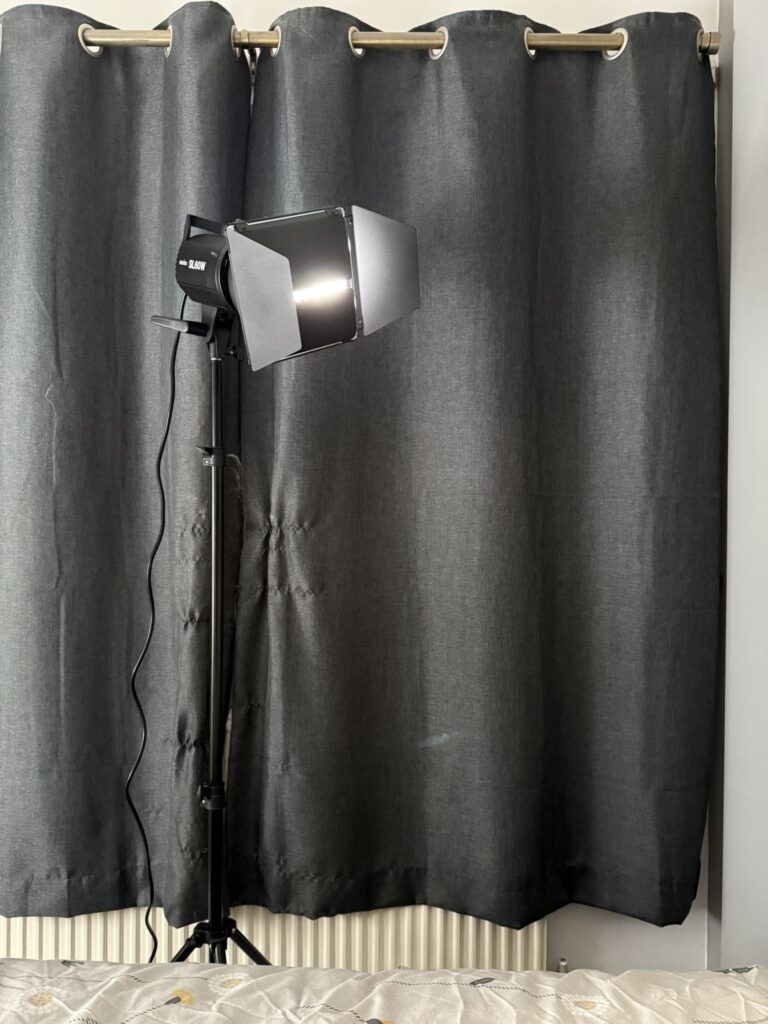
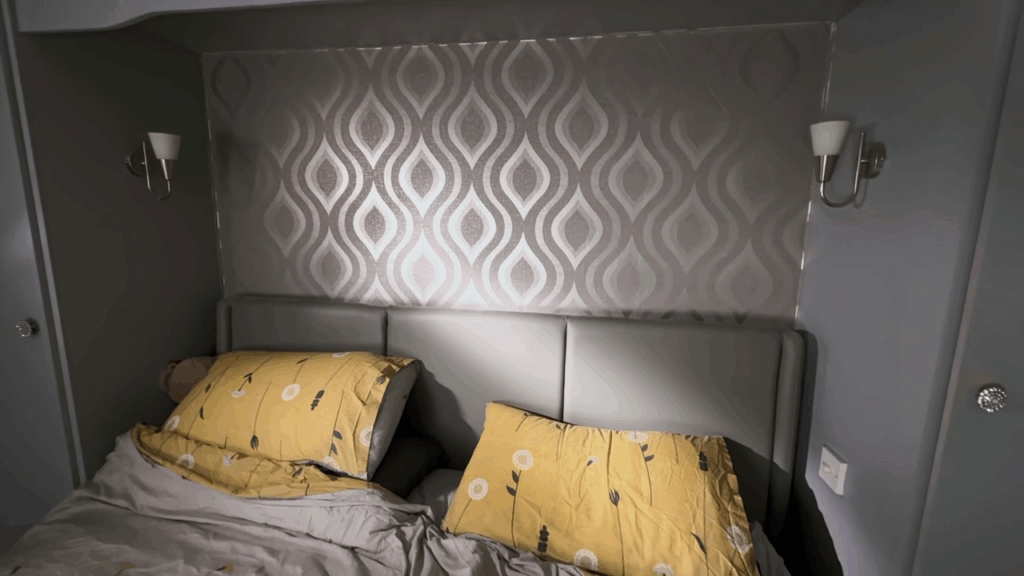
On its own, this is not enough to light the scene. We need a softer light just to fill in some of the shadows and allow us to see more of the character and the room. But not too much, we don’t want the scene too well-lit otherwise it gives the impression that it’s daytime.
To do this, I used one Neewar 530 LED light panel turned up to 100% and used the book light technique to bounce light from a white spherical light panel to create a soft light from the foot of the bed to raise the overall light levels in the room.
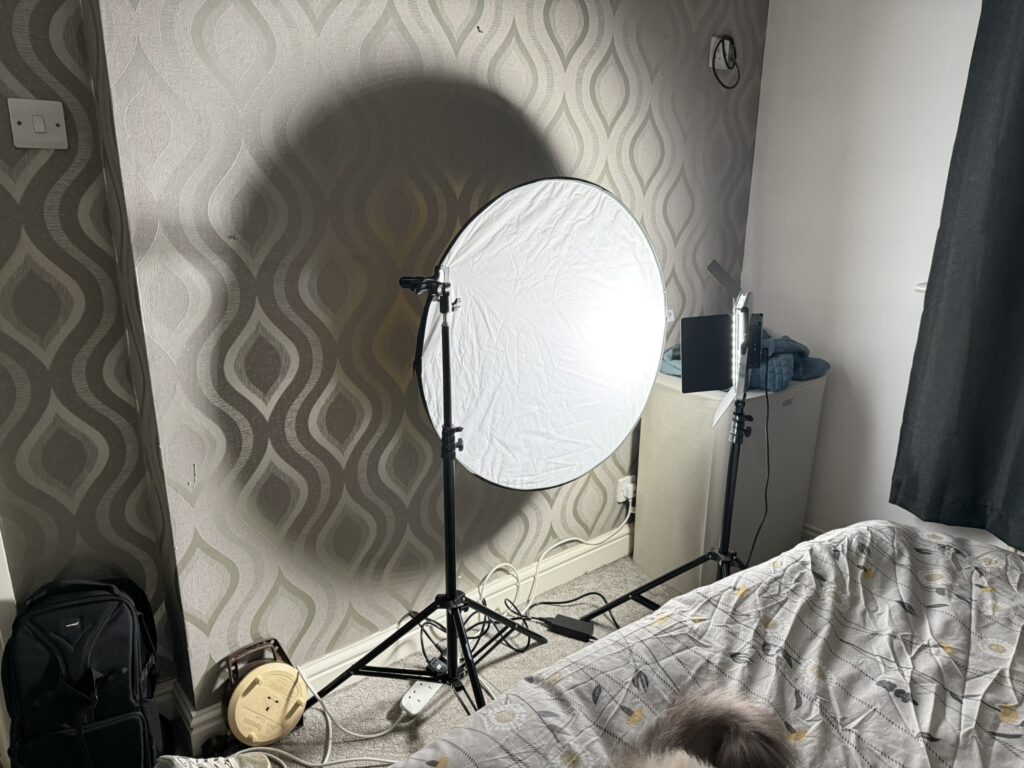
This effect seemed to work quite well in my opinion. So far, I’ve only tested it using my Canon 2000D digital camera, set to approximate the exposure settings I’d use when shooting on Kodak Double-X 16mm film. I dialled in ISO 200, an f-stop of 3.5, and a shutter speed of 1/50th while filming at 24 fps.
These settings were chosen to closely match the Aaton LTR’s configuration: Double-X has a film speed of ISO 250, the lens I’ll be using has a minimum aperture of T3 (since it’s a cinema lens, it uses T-stops rather than F-stops), and the camera runs at 25 fps with a 180° shutter. That gives us an effective shutter speed of around 1/50th of a second. Not an exact match, but close enough for a realistic test.
In fact, these small differences should slightly overexpose when I shoot the scene for real, which isn’t a bad thing. Film stocks like Double-X generally have better latitude for overexposure than underexposure. That means I can safely pull the exposure down a bit in post, which should help reduce visible grain and preserve detail in the highlights.
Below is the result I got from this experiment.
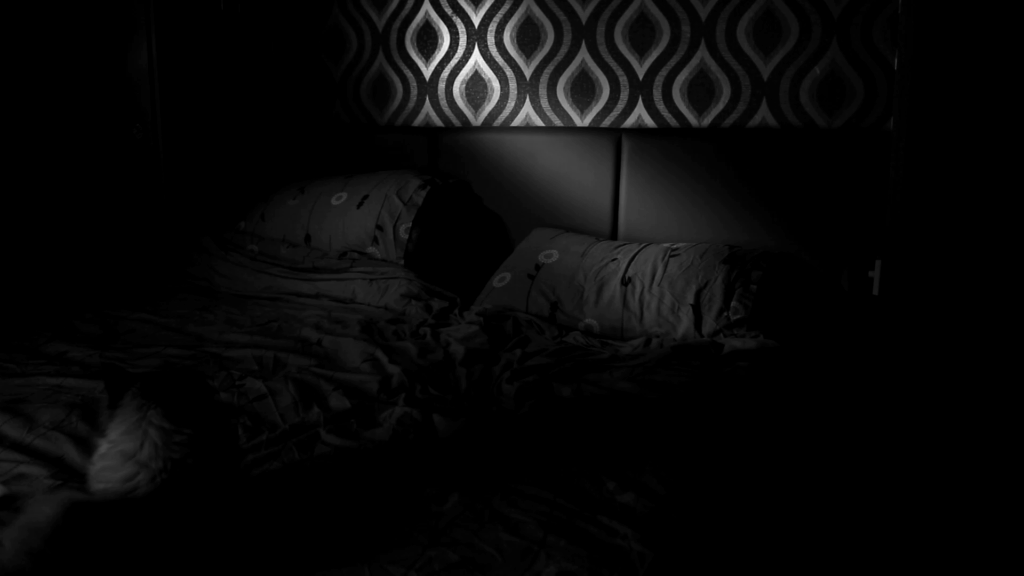
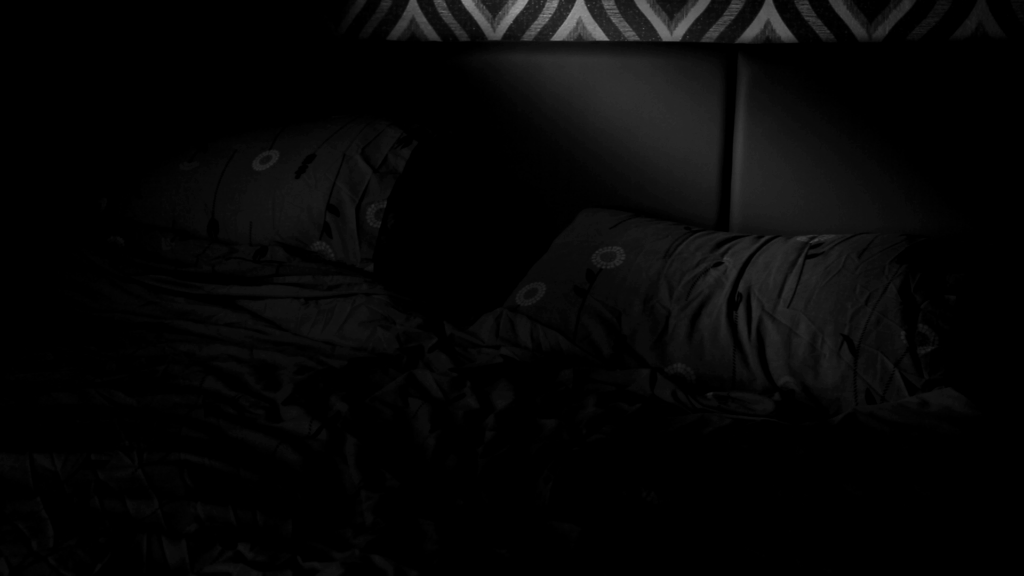
Dark Landing – Long Shot
The long shot on the landing is to create the feeling of aloneness for the main character, by framing the character in the doorway to the bedroom and creating a large empty underexposed area around it.
It was actually easy to create. I reused the lights from the earlier bedroom shot by moving the Godox 60W to point toward the far wall and opening up the barn doors again. I used the sconces as a practical light source, and then positioned the Godox to light the space from the same direction, helping to wrap the light around the character’s face. Sure, it created some harsh shadows, but from a distance, it’s not really noticeable.
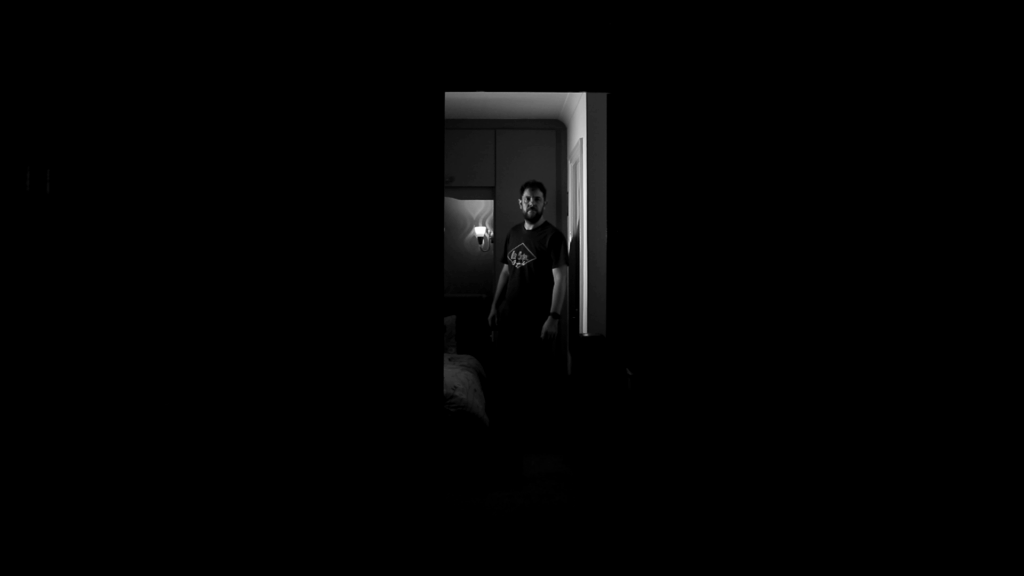
As you can see the character is lit and staring into nothingness, framed by the door of the only lit room in the house. I might play around with some small amount of light just to bring the shadows up on the landing. The idea is to help build some tension by revealing hard to see objects in the shadows.
Below is an example of how I positioned the Godox 60W to create this light.
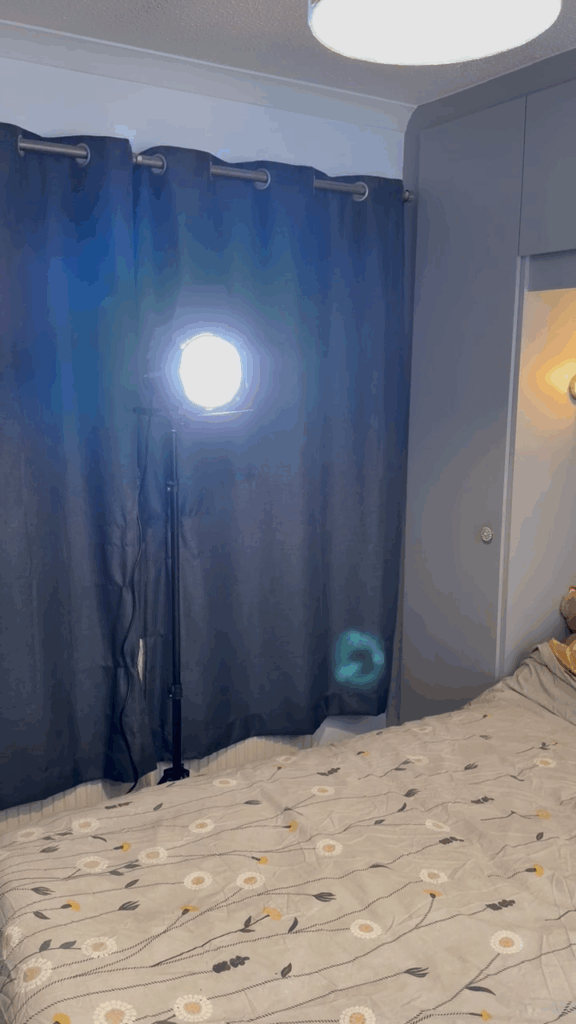
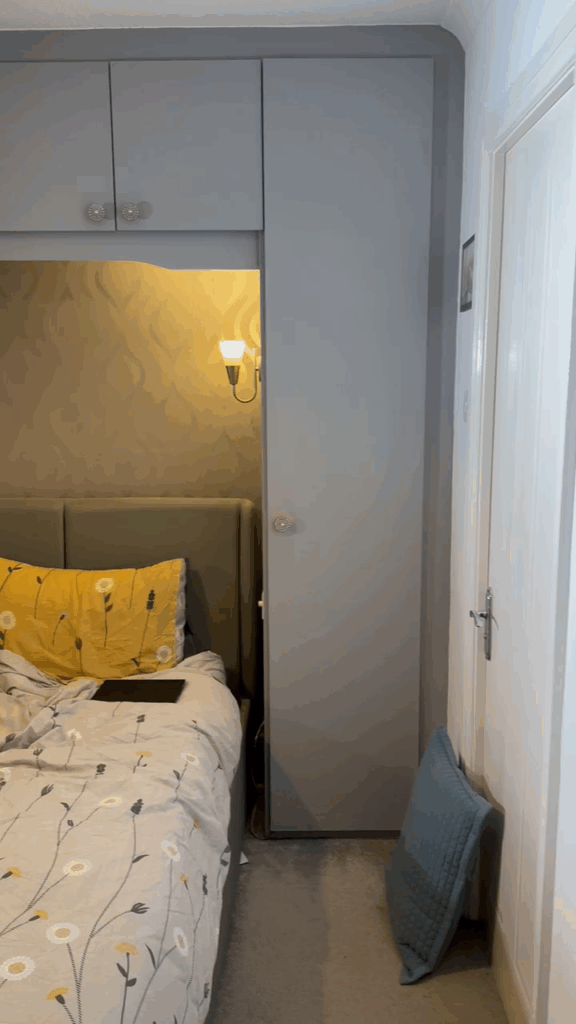
One thing I have not mentioned is that the Godox is 5600K and the sconces are 3200K. This isn’t really a problem because I am shooting in black & white, but if I was shooting colour I’d probably rush out and buy some 5600K bulbs for the sconces to match the Godox. The Neewar 530 does support 3200-5600K, which makes them great for fill lights.
And that’s it for now. I’d love to hear what you think of the lighting setup and overall approach, what works well, what could be improved, or anything you might do differently. Your feedback helps shape how I approach the final shoot.
If you’re interested in seeing how this experiment develops into a finished horror scene, make sure to subscribe to my YouTube channel here and follow along as I share more updates, behind-the-scenes content, and the final film.
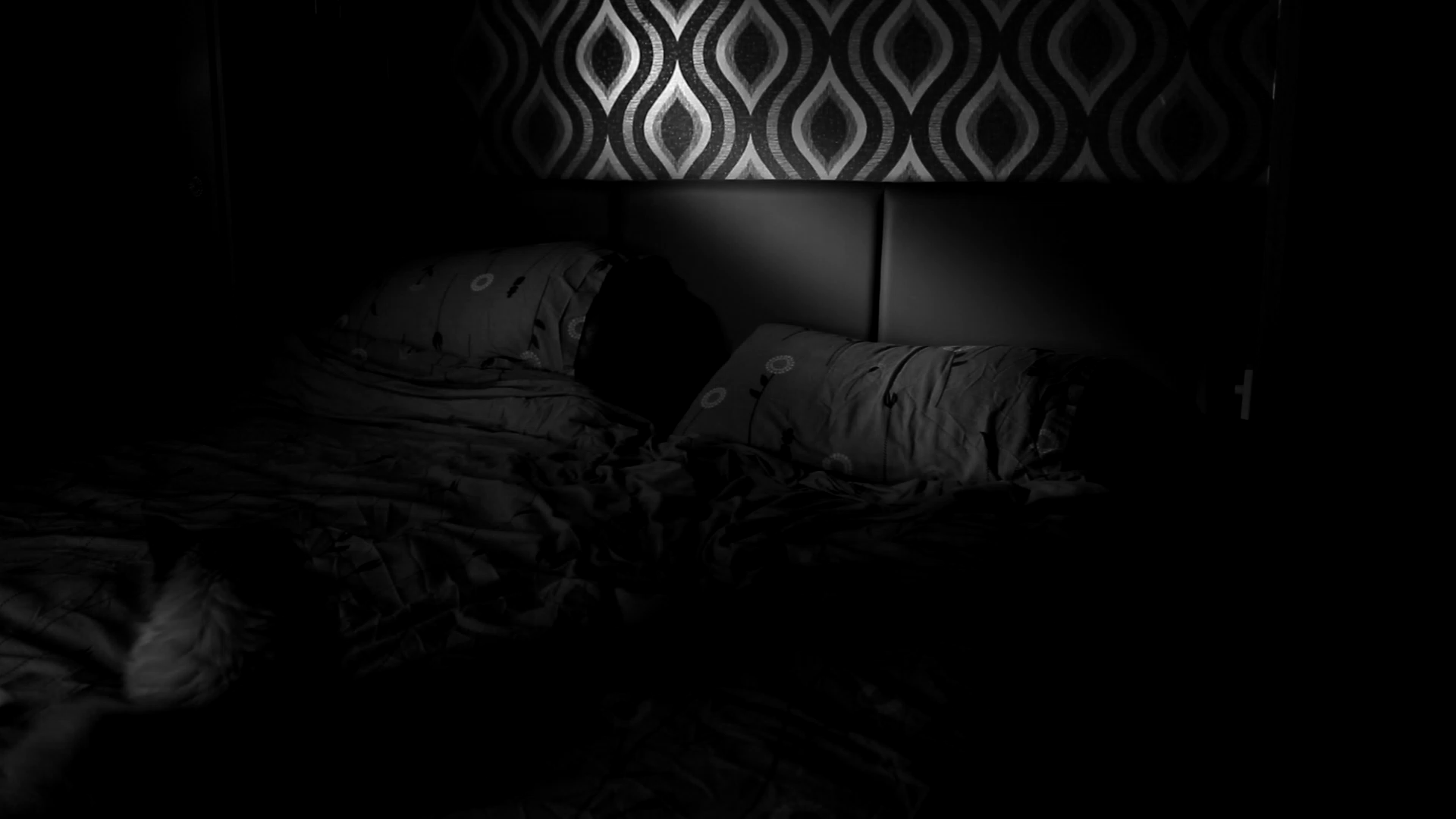
No responses yet